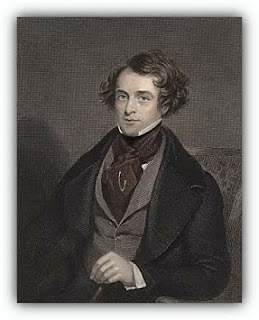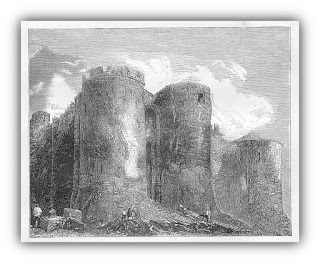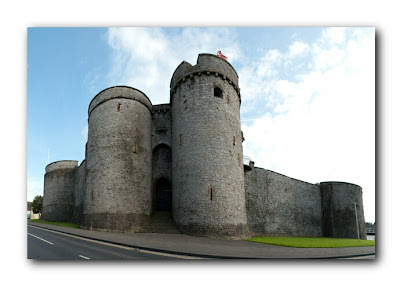So here it is...King John's Castle...finished at last!
As I said in an earlier post, it's a present for my mother-in-law and I really hope she likes it. I enjoyed painting this as it was my first attempt at painting an old building. I hope you like it too.
It's an acrylic painting reproduction of W.H. Bartlett's drawing, originally titled "The Castle Of Limerick" and published in 'The Scenery and Antiquities of Ireland' circa 1884; a publication illustrated with 120 engravings by Bartlett. Read on for more interesting information that I researched about Bartlett and King John's Castle.
William Henry Bartlett
 |
| W.H.Bartlett 1809 - 1854 |
William Henry Bartlett died at sea in the Mediterranean in 1854, age 45 yrs.
 | ||
| 1884 Antique Engraving - King John's Castle Limerick |
King John's Castle is a mighty fortress, with a dramatic history and has over 800 years of stories of siege and warfare, within it's walls. The year 1172 saw the arrival of the Anglo-Normans. During their campaign across Ireland, Limerick was burned to the ground in 1174 by Domhnall Mor O'Brien in an effort to keep Limerick out of the hands of the new invaders. 21 years later, in 1195, Limerick finally came under the new leadership of John, Lord of Ireland (soon to become King of England). John ordered a castle to be built in his name and Limerick Castle (King John's Castle) was completed in 1200. When the Norman's imposed a general peace, Limerick then prospered as a shipping port and trading center. Over time, the city was divided into two areas; 'English Town', located on King's island near the castle and 'Irish Town' which had grown up on the south bank of the river Shannon. Limerick was described in documents prepared for the Spanish ambassador in 1574 as follows:
Limerick is stronger and more beautiful than all the other cities of Ireland, well walled with stout walls of hewn marble. There is no entrance except by stone bridges, one of the two had 14 arches, and the other, 8. The houses are of square stone of black marble and built in the form of towers and fortresses.
 |
| King John's Castle today. |
Between 1993 & 1995, archaeological excavations were carried out on the site which revealed foundations, walls, doorways and paths, including a sallyport (secret entrance) all of which have been restored and are open to the public. There are further plans in 2013 to open a new visitor center where the castle's dramatic history will be brought to life in a stunning new exhibition.

Comments
Post a Comment
Thanks for your comment!